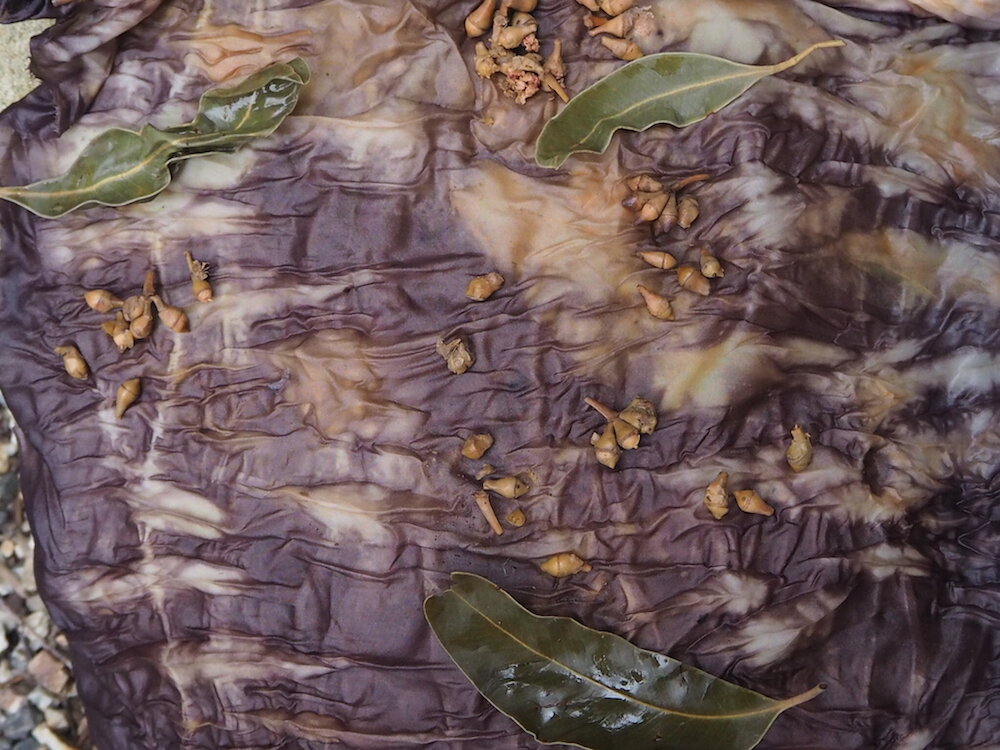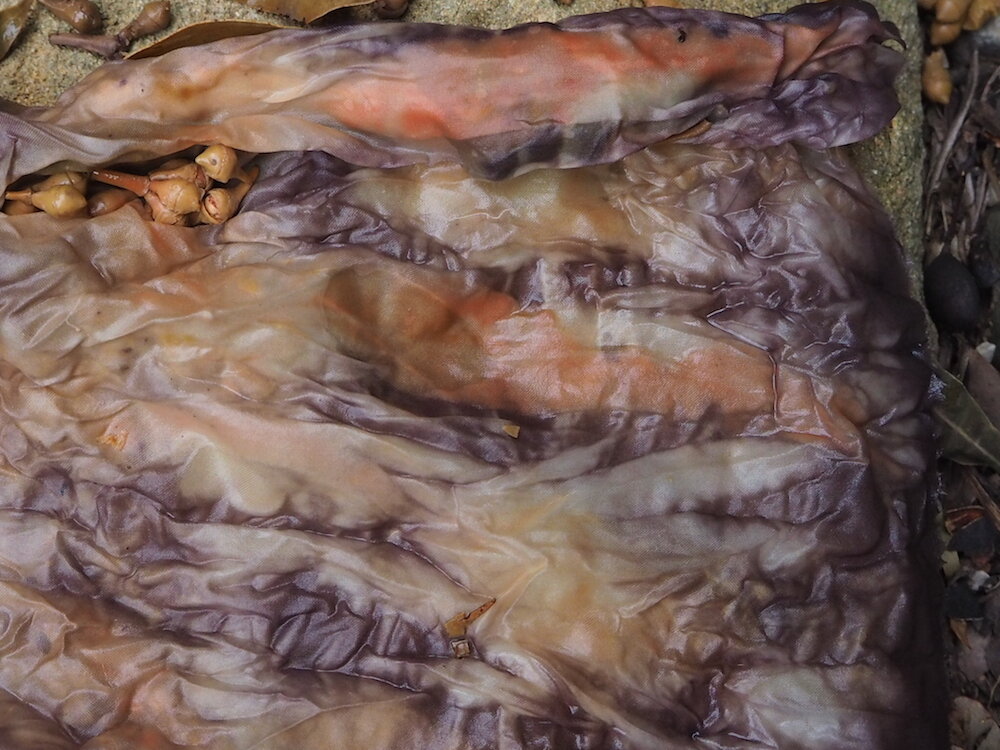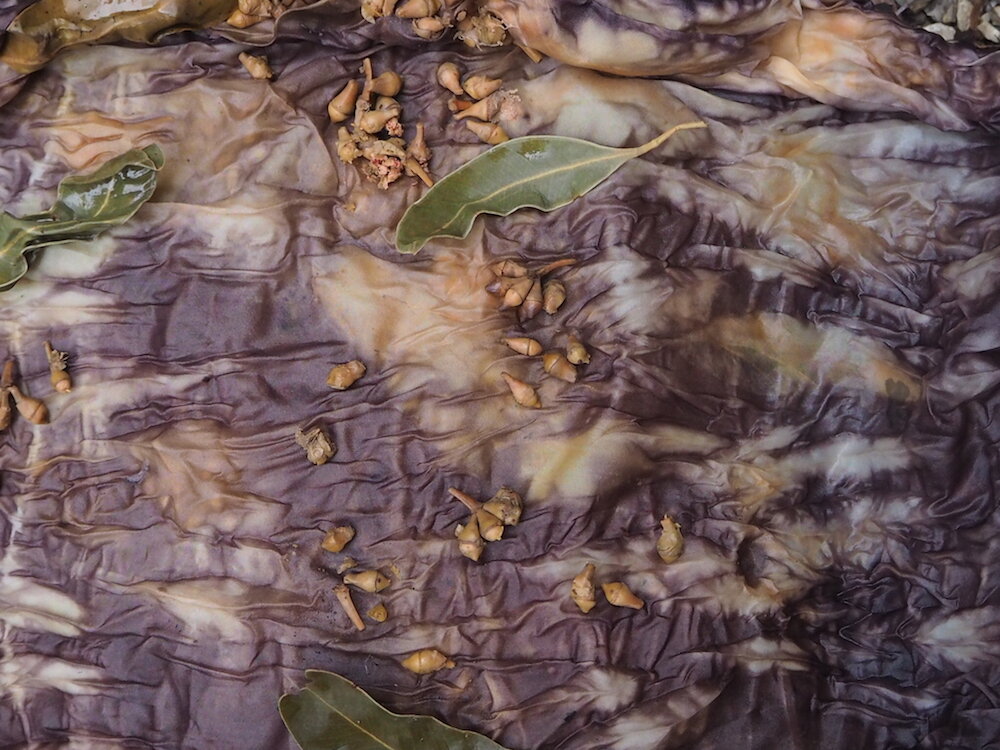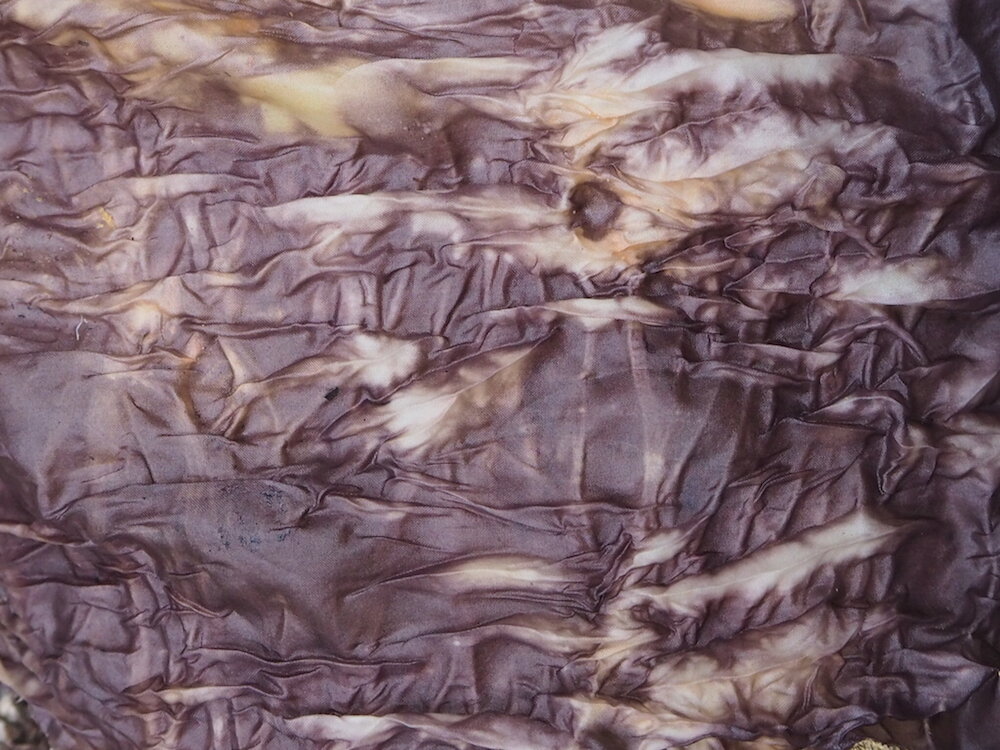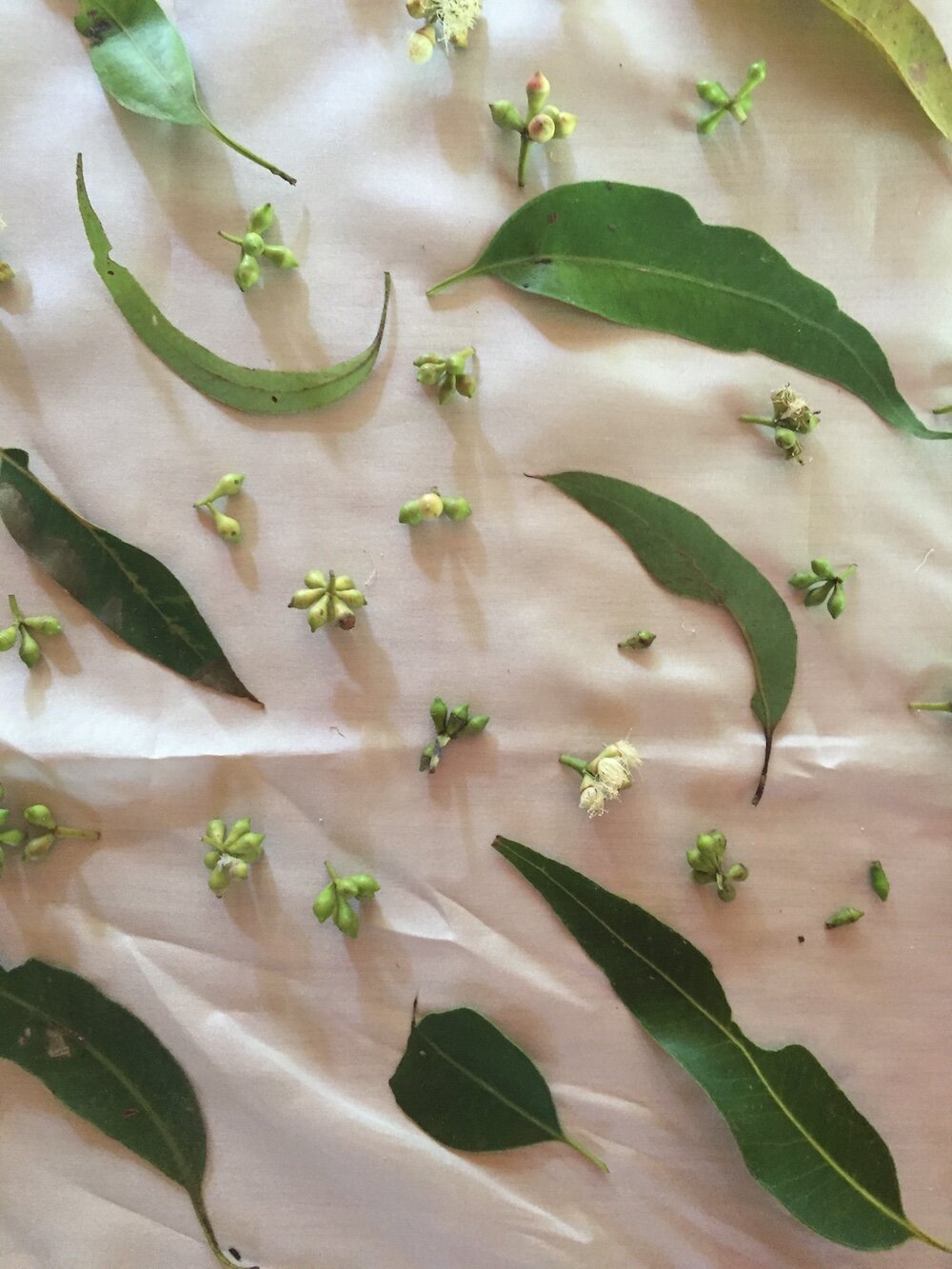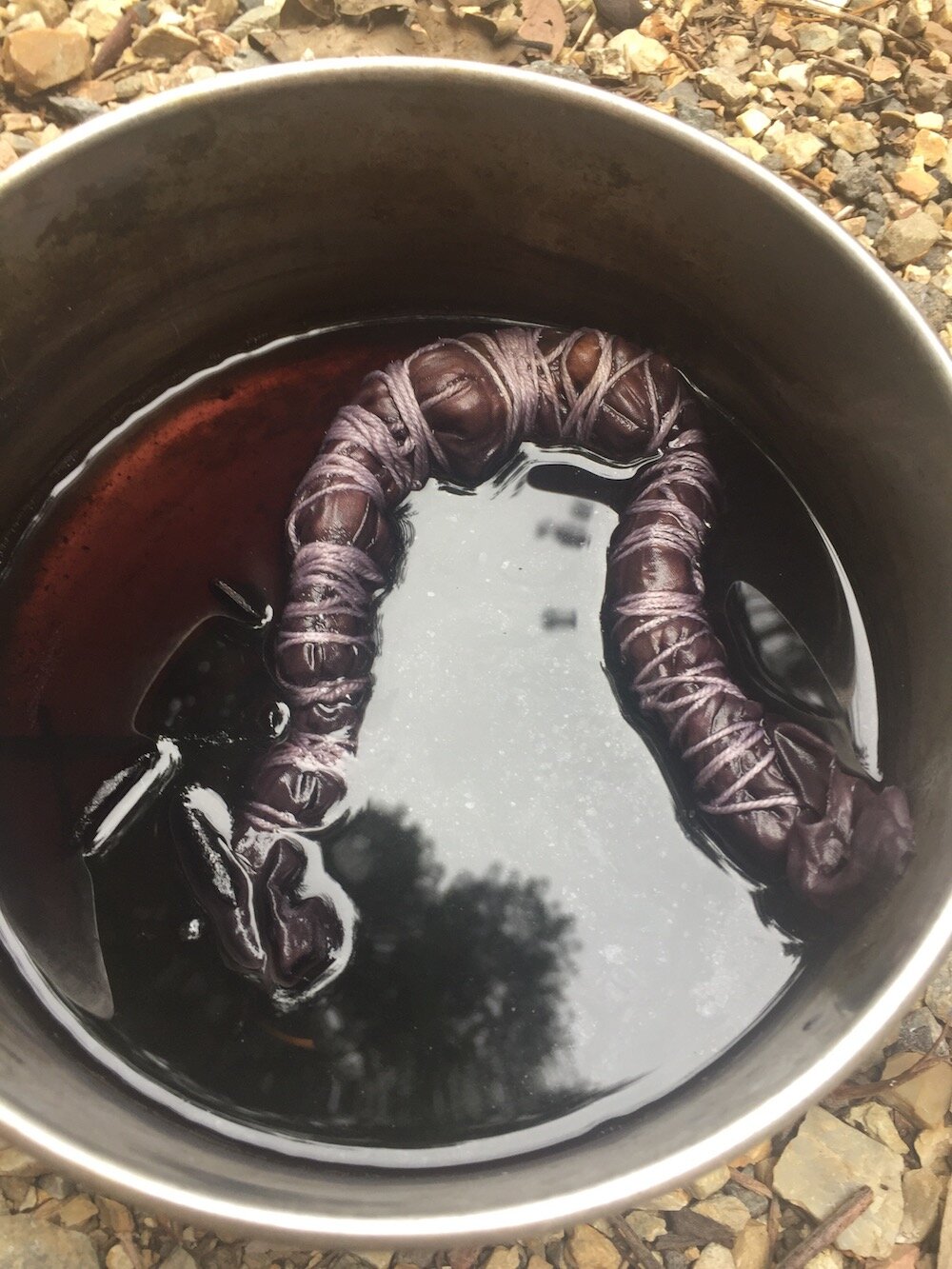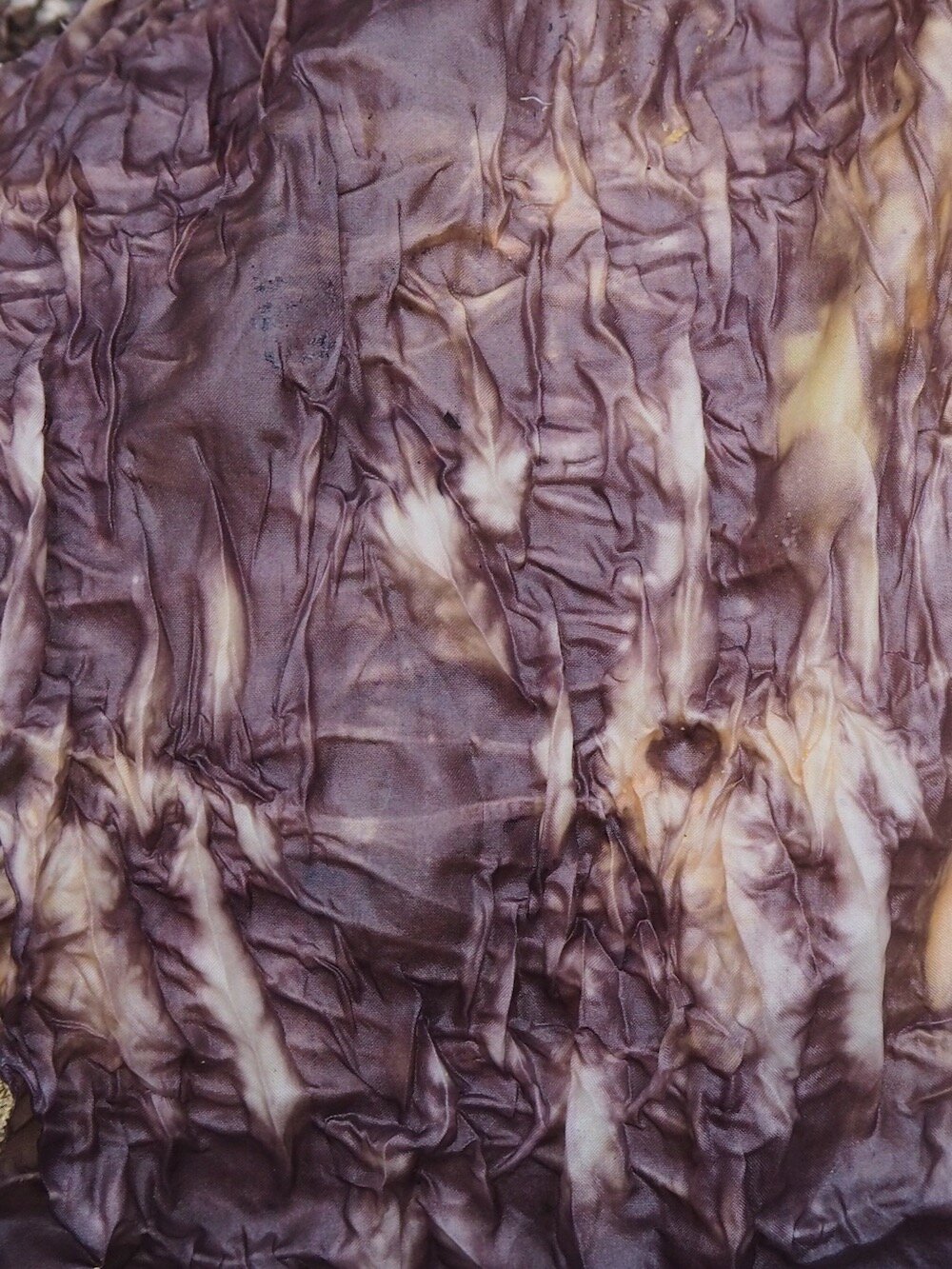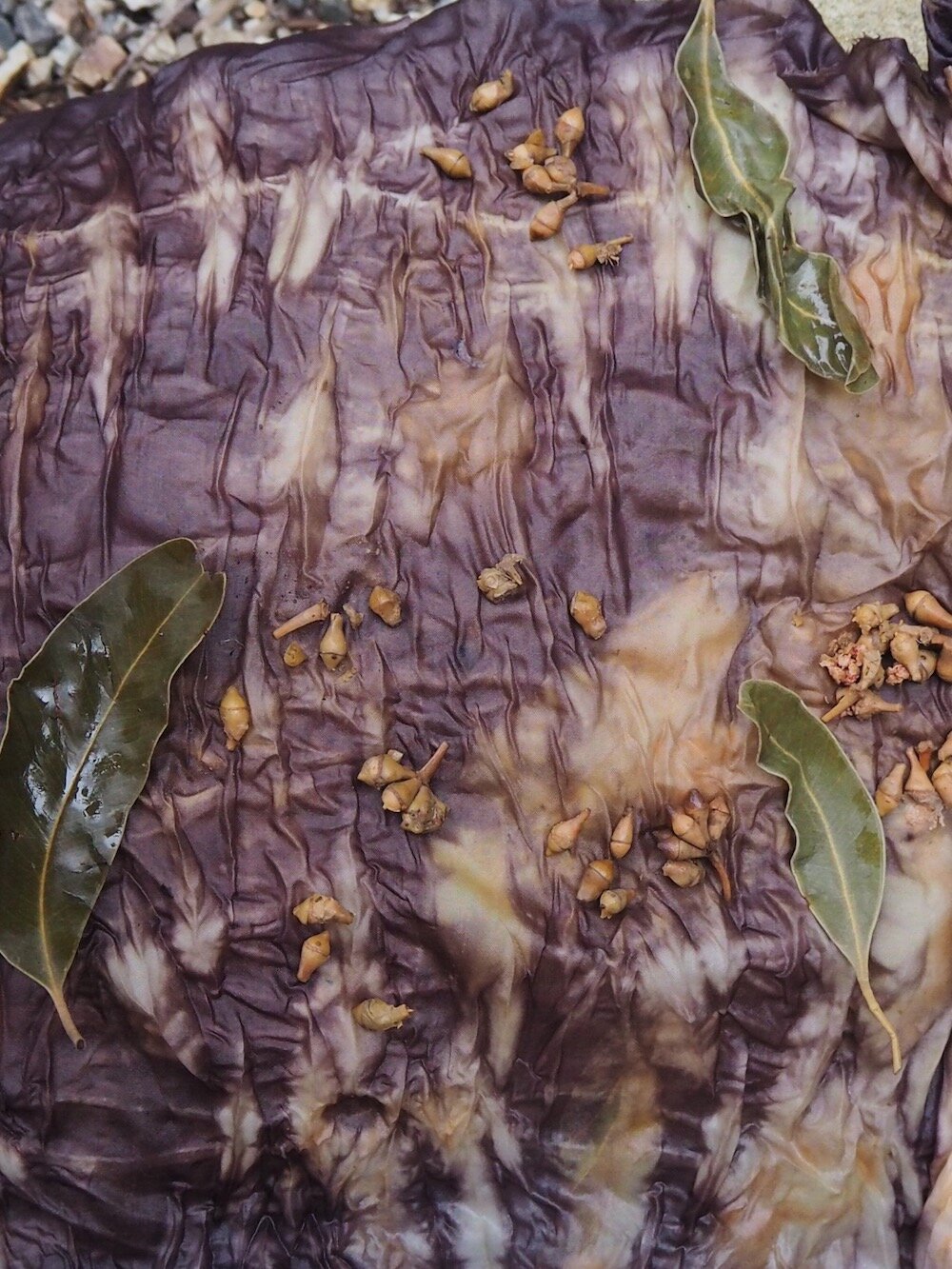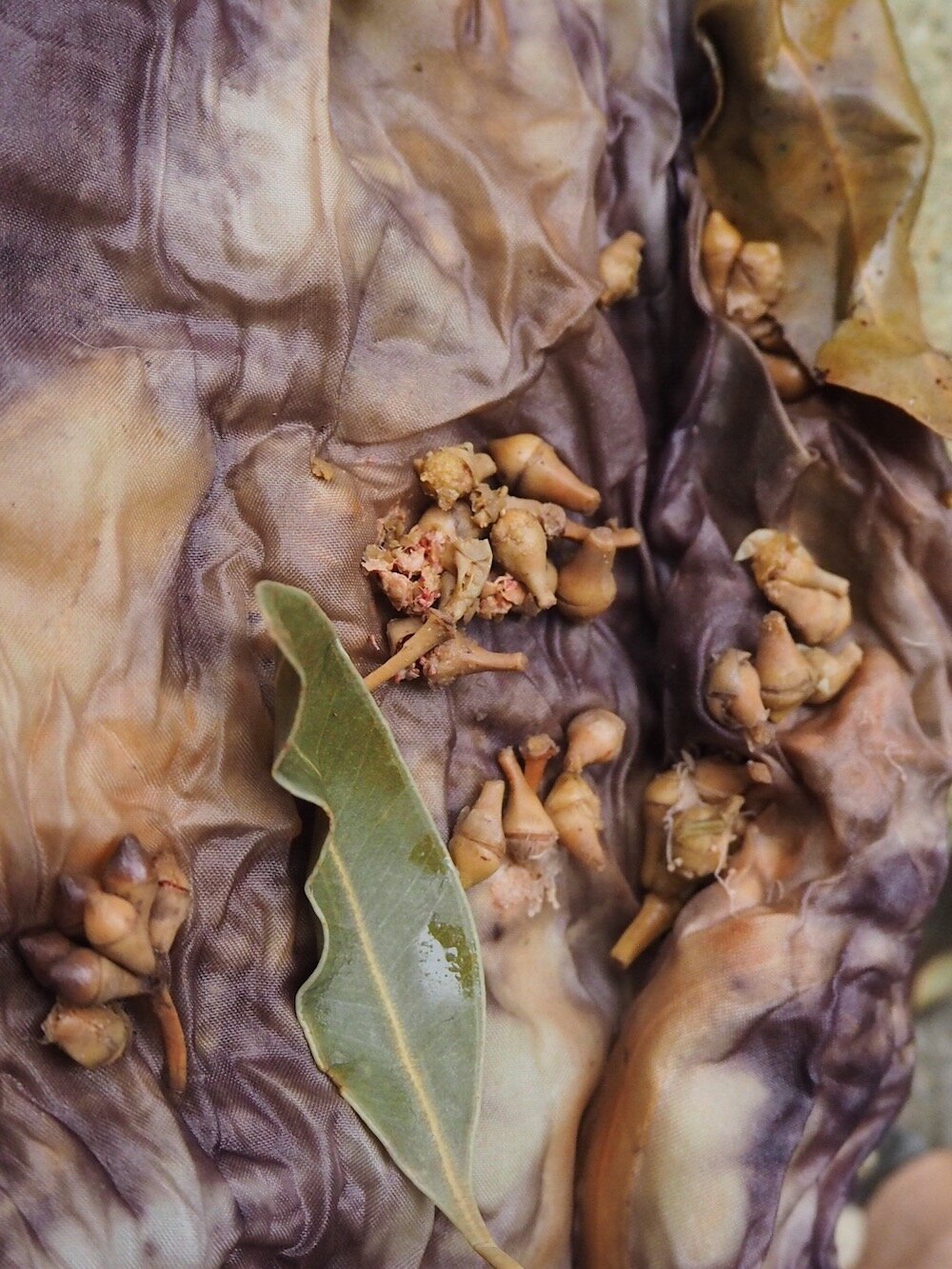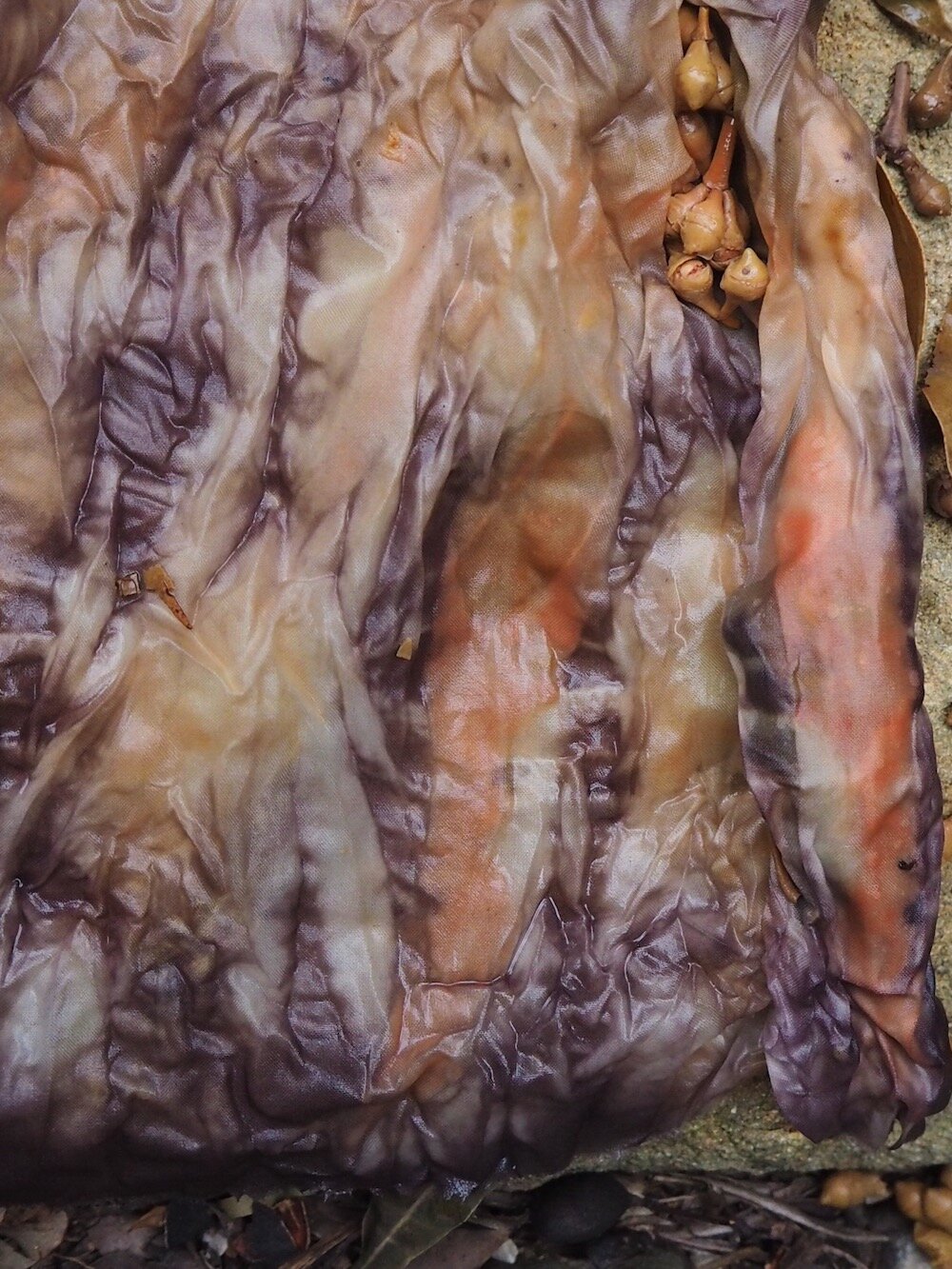Natural Dye Journal : eucalyptus leaves & seedpods
Here's some pieces from my dye pots lately. I created this piece using fresh eucalyptus leaves and the green unopened seedpods that had fallen (due to a lot of wind and rain) on my dad's driveway. I started thinking about a piece of cloth my mum had, with lots of little bumps all over it. A Shibori pattern, that I didn't know the name of then, but which I think is closest to kanako shibori.
I do wish I knew the different species of eucalyptus trees around our property, but there's a lot. And sometimes I don't know which leaf has fallen from which tree. But this is one my goals for the coming years, to better document and understand the trees in my region. It does make it a bit hard when often I only get versions of brown and brown and brown from the eucalyptus leaves.
But then - of course, that makes the oranges and purples that much more dramatically wonderful and exciting.
Here's what I did:
Gathered windfallen leaves and green unopened seedpods
Arranged them in a pretty pattern, which to be honest doesn't really matter too much as it shifts about, but some version of a pattern still evolves in your final piece, so do keep that in mind.
Roll the bundle very very tightly, the tighter it is the better because you get the direct contact of print onto fabric.
Place it in a pot and simmer for quite a while, sometimes it might take an hour, often I leave it (heat turned off, lid on to contain the heat) over night for the colour develop more. Other times I'm too impatient and simply have to peek at it after an hour or so. *It is generally always better to leave it overnight, allow it to cool down before opening. You get better colour and print transfer, but a few hours is enough as well.
Hang it up to dry, with the leaves and seedpods still on it - they'll fall off as they dry. Don't wash it straight away, once it's dried then you can wash it. I find this helps the colour to set a little more, rather than washing it out straight away.
Eucalyptus works best with animal fibres such as silk or wool, rather than plant fibres, but it doesn't mean you don't get some results on cotton or linen. Give them a go, but don't expect the colours to be as vibrant or dramatic. You can also experiment with thick (watercolour) paper for fabulous contact prints.
If you'd like to try more natural & botanical dyeing I have a whole online course, with videos and downloadable pdfs, as well as unlimited email access to me for any extra help you might want. I talk about mordants, local colour, different dye techniques.

Come say hello & connect on Instagram @petaplum:
Textile artist, writer, and photographer (among quite a few other things).
I love working with textiles, natural dyes & slow mindful moments, as well as guiding creatives (artists, crafters, photographers, alternatives therapies) on how to best share their work, voice & authentic self with their community & audience.
Mama to 3, live in Northern NSW, Australia
Instagram @petalplum


